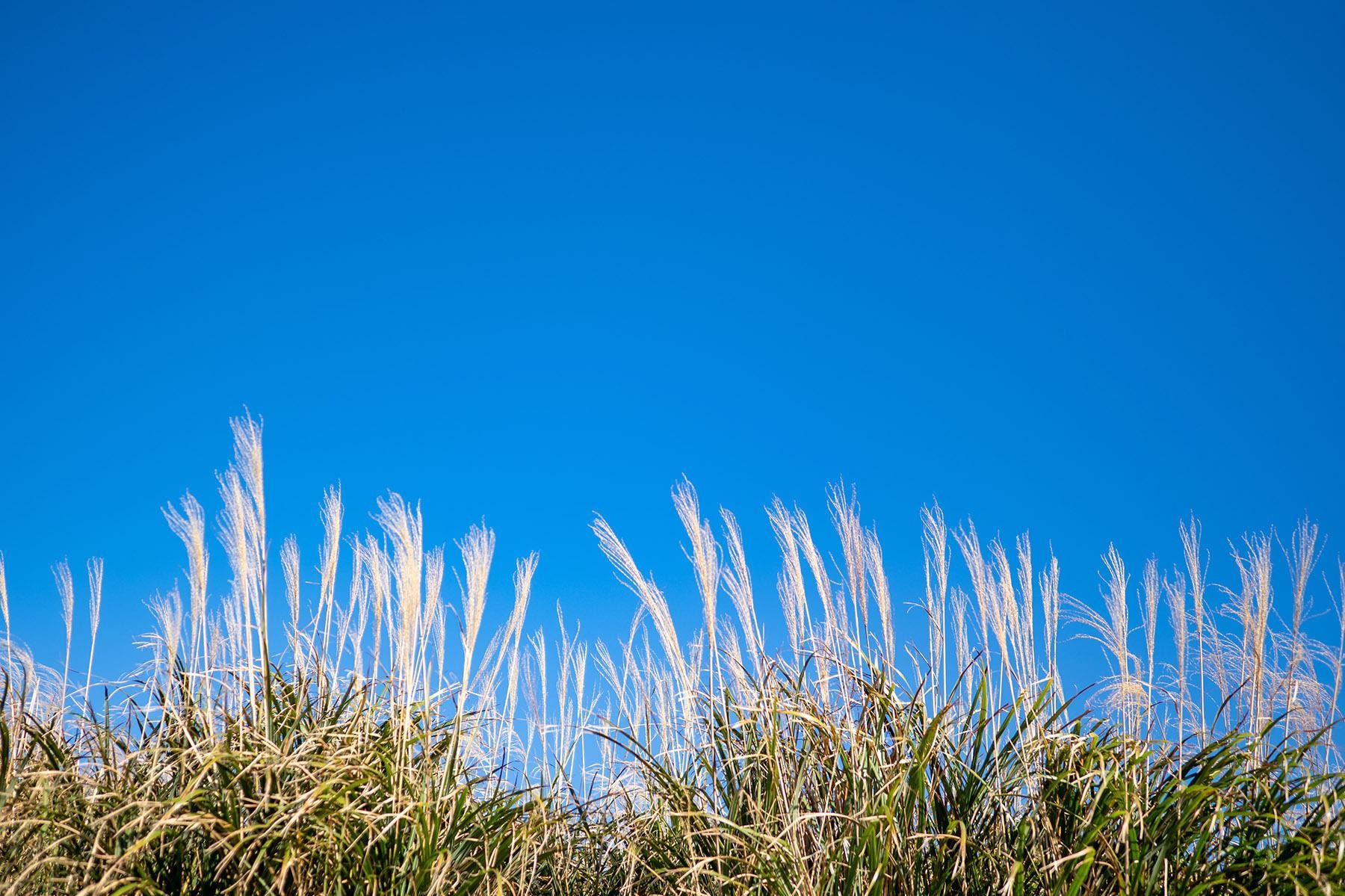Mar 26 2021
According to a new study, certain grasses are a sustainable source of energy that could be crucial for achieving net-zero carbon emissions, and these grasses can withstand adverse growing environments.

Image Credit: Earlham Institute.
The Miscanthus genus of grasses, which are often used to add texture and movement to gardens, may rapidly become the preferred choice for producing biofuels.
The latest study has now demonstrated that it is possible to grow these grasses in lower agricultural-grade conditions, such as marginal land, because of their excellent photosynthetic capacity and resilience at low temperatures.
Thanks to its low input requirements and high biomass yield, Miscanthus is also a potential biofuel. This means the grass can adapt to a broad range of land types and climate zones. But while Miscanthus is viewed as a feasible commercial option for farmers, its yields can be threatened by excessive or inadequate water supply, like summer heatwaves or increasing winter floods.
With limited understanding of the productivity of Miscanthus species in moisture-saturated and flooded soil conditions, scientists from the Earlham Institute in Norwich set out to understand the variations in water-stress tolerance among these species to direct genomics-assisted crop breeding.
The researchers, together with colleagues from TEAGASC—The Agriculture and Food Development Authority in the Republic of Ireland—and the Institute of Biological, Environmental and Rural Sciences in Wales looked at numerous Miscanthus genotypes to detect traits that offered a better understanding of the adaptation and regulation of genes during water stress.
The researchers identified certain genes that play a crucial role in reaction to water stress across different species of Miscanthus and observed consistencies with active biological processes. These processes are crucial during the survival of drought stress in other kinds of organisms.
Miscanthus is a commercial crop due to its high biomass productivity, resilience, and ability to continue photosynthesis during the winter months. These qualities make it a particularly good candidate for growth on marginal land in the UK, where yields might otherwise be limited by scorching summers and wet winters.
Dr Jose De Vega, Study Author and Group Leader, Earlham Institute
Earlier, a decade-long study performed in Europe had revealed that the Miscanthus species yielded up to 40 tons of dry matter for each hectare every year. This milestone was reached just after a couple of years of establishment, demonstrating that the biofuel capacity of Miscanthus was more efficient in ethanol production for each hectare when compared to corn and switchgrass.
In China, Japan, and Korea, the Miscanthus species have been utilized as forage species for many years and, because of their high lignocellulose (plant dry matter) content and high biomass yield, these species are commercially utilized as feedstock for the production of bioenergy.
Lignocellulose biomass mainly produces bio-ethanol and is the most abundantly available raw material on the planet for producing biofuels. The high biomass ability of Miscanthus makes the grass a useful commodity for farmers who have marginal lands but the response of the crop to water stress can differ based on the origin of the Miscanthus species.
The researchers compared the molecular and physiological responses among the Miscanthus species in both drought and water-flooded conditions. They used these induced physiological conditions to comprehensively analyze the molecular basis of water stress in the Miscanthus species.
In all the four Miscanthus species, the researchers observed a major biomass loss under drought conditions. They also noted that biomass yield in all the species was as good as or better than regulated conditions in flooded conditions. The higher biomass yield in flooded conditions and the low number of differentially expressed genes supported the use of the Miscanthus species in marginal lands prone to floods.
The global challenge of feeding the ever-increasing world population is exacerbated when food crops are being used as feedstock for green energy production.
Dr Jose De Vega, Study Author and Group Leader, Earlham Institute
“Successful plant breeding for ethanol and chemical production requires the ability to grow on marginal lands alongside prioritising the attributes; non-food related, perennial, high biomass yield, low chemical and mechanical input, enhanced water-use efficiency and high carbon storage capacity,” added Dr De Vega.
Miscanthus fulfils these for enhanced breeding—saving money and space for farmers, and lending a hand to our over polluted environment by emitting CO2.
Dr Jose De Vega, Study Author and Group Leader, Earlham Institute
“The research team is in the early selection process of high biomass genotypes from large Miscanthus populations that are better adapted to the UK conditions and require low inputs. The use of genomic approaches is allowing us to better understand the traits that make some Miscanthus species a commercially sustainable alternative for marginal lands and applying this to agri-practices,” concluded Dr De Vega.
Journal Reference:
De Vega, J. J., et al. (2021) Physiological and transcriptional response to drought stress among bioenergy grass Miscanthus species. Biotechnology for Biofuels. doi.org/10.1186/s13068-021-01915-z.